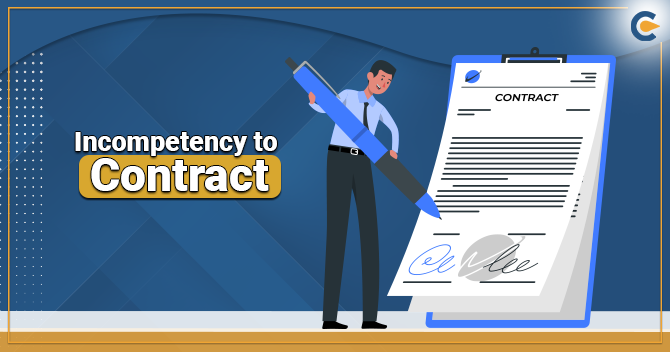A commercial lease agreement is a legally binding contract between a landlord and a tenant for the rental of a commercial property, like a store, office, or warehouse. This type of lease is different from a residential lease, which is used for renting a home or apartment.
In a commercial lease agreement, the terms and conditions of the rental agreement are spelled out, including the duration of the lease, the amount of rent to be paid, any security deposit required, and any restrictions on how the space can be used. The lease will also list the landlord’s and tenant’s responsibilities, such as who is responsible for repairs, utilities, and taxes.
What Are The Components Of The Lease Agreement?
Here are some important elements that are typically included in a commercial lease agreement:
Parties: The lease agreement identifies the landlord and the tenant, as well as any other parties involved in the lease arrangement.
Description of the Property: The lease agreement includes a description of the commercial property being leased, such as the location, size, and features of the space.
Term of the Lease: The term of the lease refers to the length of time that the tenant will be leasing the commercial property. This can range from a few months to several years.
Rent and Other Fees: The lease agreement specifies the amount of rent that the tenant will be paying, as well as any other fees that may be required, such as a security deposit or maintenance fees.
Use of the Property: The lease agreement outlines how the commercial property can be used, including any restrictions or limitations.
Maintenance and Repairs: The lease agreement specifies who is responsible for maintaining and repairing the commercial property, such as the landlord or the tenant.
Termination and Renewal: The lease agreement outlines the conditions under which the lease can be terminated or renewed, as well as any penalties for early termination.
Liability and Insurance: The lease agreement establishes the liability of the landlord and the tenant, and also outlines the insurance requirements for both parties
Dispute Resolution: The lease agreement includes provisions for resolving disputes between the landlord and the tenant, such as mediation or arbitration.
What Are Different Types Of Lease Agreements?
In India, there are several types of commercial lease agreements that are commonly used. Here are some of the most common types:
Gross Lease: In a gross lease, the landlord is responsible for paying all of the property-related expenses, such as property taxes, insurance, and maintenance costs. The tenant only pays a fixed rent amount.
Net Lease: In a net lease, the tenant is responsible for paying some or all of the property-related expenses in addition to rent. There are three subtypes of net leases:
- a. Single Net Lease:
- The tenant pays rent and a portion of property taxes
- b. Double Net Lease:
- The tenant pays rent, a portion of property taxes, and insurance premiums.
- c. Triple Net Lease:
- The tenant pays rent, property taxes, insurance premiums, and maintenance costs.
Percentage Lease: In a percentage lease, the tenant pays a percentage of their sales revenue in addition to a fixed rent amount. This type of lease is common for retail spaces.
Ground Lease: In a ground lease, the tenant leases only the land from the landlord, and is responsible for constructing their own building on the property.
Build-to-Suit Lease: In a build-to-suit lease, the landlord agrees to construct a building on the property to the tenant’s specifications, and the tenant agrees to lease the property upon completion.
Sublease: A sublease occurs when the original tenant leases the property to a subtenant. The original tenant remains responsible for paying rent and fulfilling the terms of the original lease, but the subtenant pays rent to the original tenant.
It is important for both landlords and tenants to carefully review and understand the terms of the lease agreement before signing. Seeking legal advice is recommended to ensure that all terms are fair and reasonable for both parties.
What Is The Legal Aspect According To Laws In India?
- Some of the laws and rules that apply to commercial lease agreements in India are the Transfer of Property Act of 1882, the Indian Contract Act of 1872[1] and the rent control laws of each state. The commercial lease agreement typically consists of the following sections:
Premises: This section includes a description of the commercial property being leased, including its location, size, and features.
Term: This section specifies the length of the lease, including the start and end dates.
Rent and Other Charges: This section specifies the rent amount, payment schedule, and any other fees or charges that the tenant will be responsible for paying, such as a security deposit, maintenance fees, or utilities.
Use of Premises: This section outlines how the commercial property can be used, including any restrictions or limitations.
Maintenance and Repairs: This section specifies who is responsible for maintaining and repairing the commercial property, such as the landlord or the tenant.
Alterations and Improvements: This section details whether the tenant is allowed to make alterations or improvements to the property and, if so, what kind and how much are allowed.
Termination and Renewal: This section outlines the conditions under which the lease can be terminated or renewed, as well as any penalties for early termination.
Default: This section specifies the consequences if the tenant fails to fulfill their obligations under the lease, such as eviction or forfeiture of the security deposit.
Indemnification and Insurance: This section establishes the liability of the landlord and the tenant, and outlines the insurance requirements for both parties.
Assignment and Subletting: This section specifies whether the tenant is allowed to sublet or assign the lease to another party.
Dispute Resolution: This section includes provisions for resolving disputes between the landlord and the tenant, such as mediation or arbitration.
In India, the laws and rules that apply to commercial lease agreements depend on which state the property is in. For instance, the Delhi Rent Control Act of 1958 and the Maharashtra Rent Control Act of 1999 both control commercial leases in their respective cities. These laws give rules about things like how much a security deposit can be and how a tenant can be kicked out. Also, the Goods and Services Tax (GST) may apply to the rent and other fees in commercial lease agreements, and both parties should make sure they follow the GST laws.
Conclusion
In conclusion, a commercial lease agreement is a legal document that says how a landlord and a tenant will work together to use commercial property. The agreement includes various provisions and conditions that protect the interests of both parties and ensure that they fulfil their obligations under the lease. It is important for both the landlord and the tenant to carefully review and negotiate the terms of the lease agreement before signing to ensure that it is fair and reasonable. Seeking legal advice can also help to ensure that the agreement complies with applicable laws and regulations. Overall, a well-drafted commercial lease agreement can help prevent disputes and promote a mutually beneficial relationship between the landlord and the tenant.
Also Read:
What Are The Important Facts Related To Commercial Lease Agreement?











